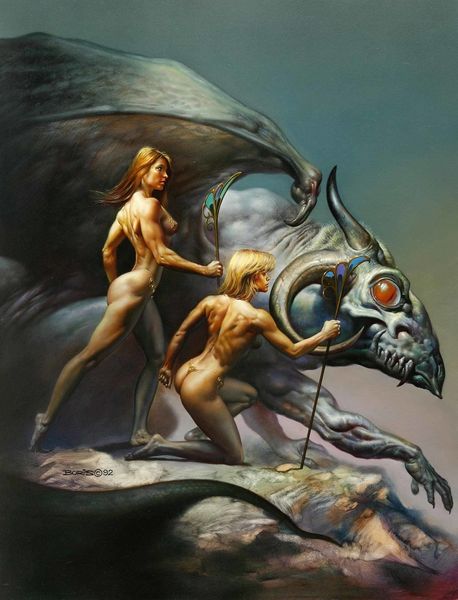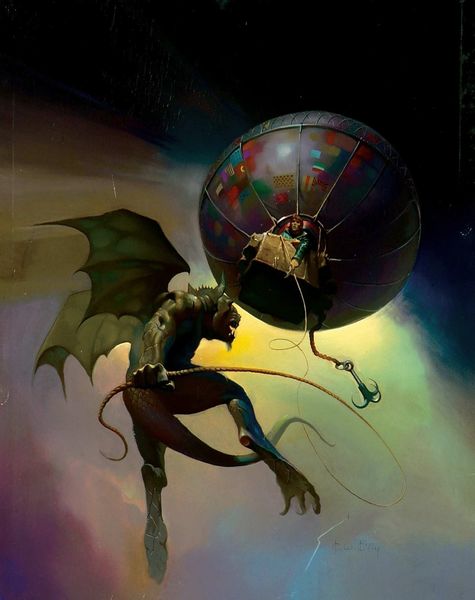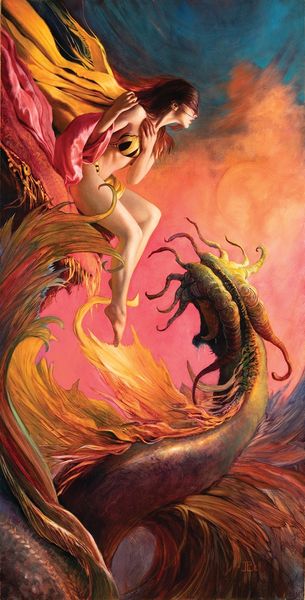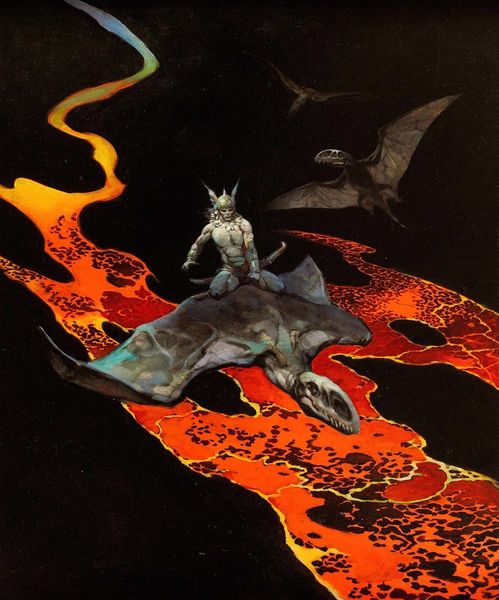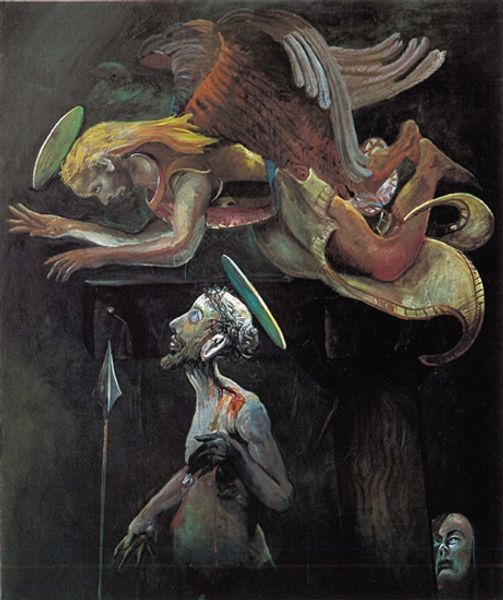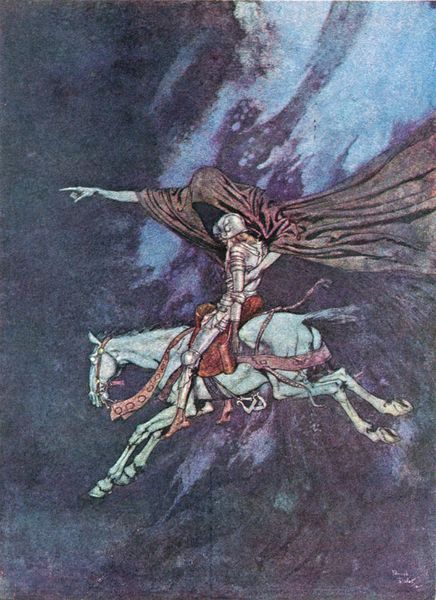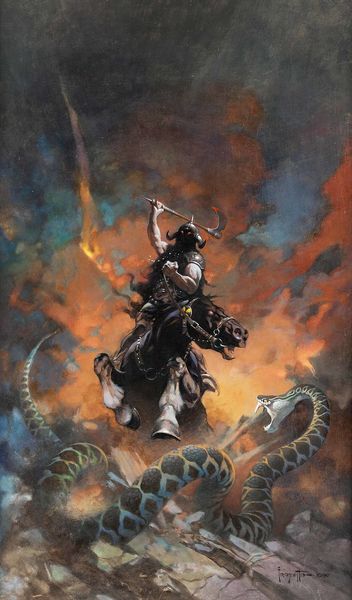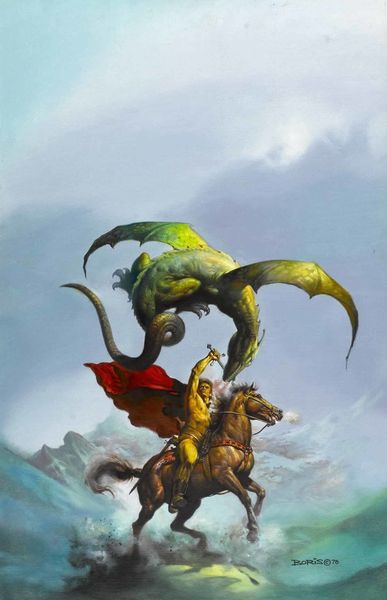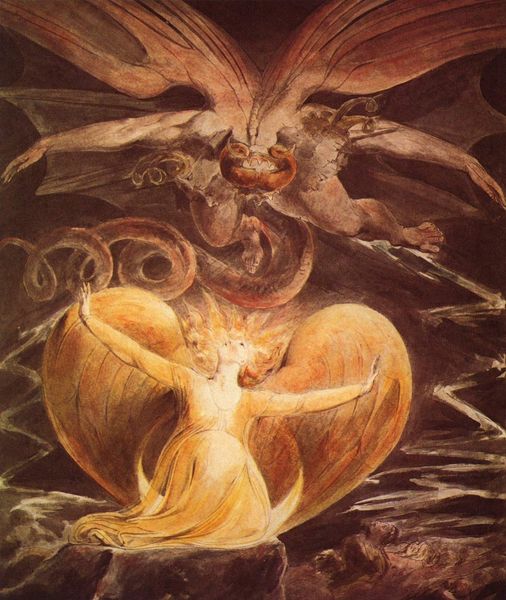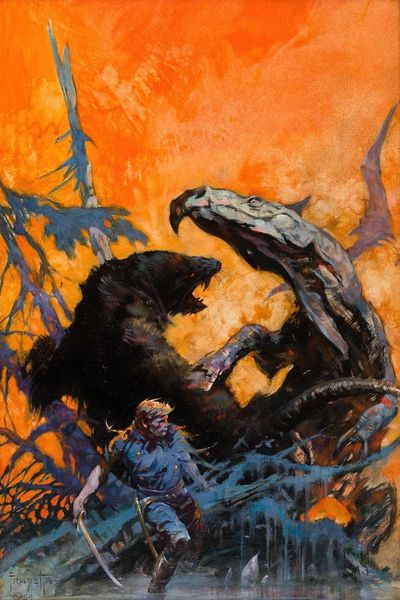
Copyright: Modern Artists: Artvee
Editor: This is Boris Vallejo’s “Medea’s Chariot” created in 1998. What strikes me most is how fierce Medea looks riding that incredible two-headed dragon! What do you see in this piece? Curator: The iconography is fascinating, isn't it? Dragons often embody chaos and primordial power. That it has two heads – and each is distinct – suggests inner conflict. It could mirror Medea's own internal struggles. What feelings do you have as you look upon her holding the whip? Editor: I get a sense of coldness... a ruthless control. Considering the story of Medea, where she murders her own children for revenge, that image really sticks with you. Is that harshness deliberate? Curator: Precisely. Think about the colors chosen: a sort of burnished gold and copper. They can symbolize royalty but also avarice, reflecting Medea’s desperation. Her pallor and cold expression sharply contrast the fantastical dragon. Have you observed any classical visual structures informing this? Editor: I see hints of Greco-Roman architecture in the background, but it feels almost... ghostly, or like a ruin. It is at once present, yet obscured by this dominant draconian presence. Is that contrast key to its message? Curator: Absolutely. The decaying classicism speaks to the tragic fall from grace – not just of heroes and empires, but perhaps of humanity itself when consumed by vengeance and pride. Notice that lunar presence too! Editor: The moon, providing almost the sole source of light... it adds to the gothic feel and isolation. The cultural memory makes it so effective, almost an immediate reaction. Curator: Yes, art is the product of cultural memory and continuity, a dialogue across millennia. Consider how our interpretations continue to shift as we unearth the symbols embedded within them! It's been enlightening for me too!
Comments
No comments
Be the first to comment and join the conversation on the ultimate creative platform.


